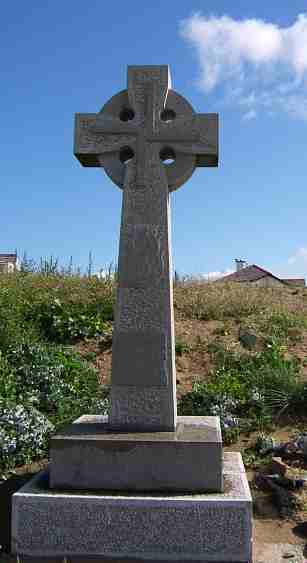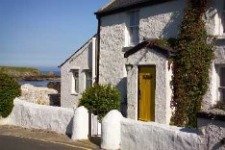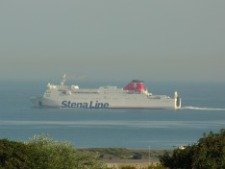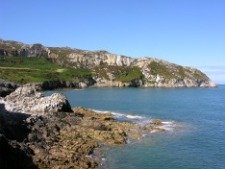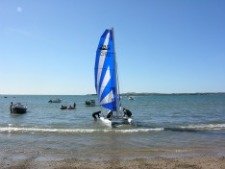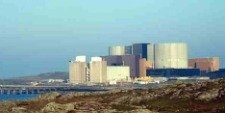|
Saint Ffraid and Millennium Cross, Trearddur Bay
Saint Ffraid, the patron saint of Trearddur Bay, was born in Faughart, Ireland in about 450 AD. The Millennium Celtic Cross, above the beach at Trearddur and bearing her name, was erected to mark the year AD 2000. The name Saint Ffraid is the Welsh version of Saint Bride (or "Brigid"). She set up a monastery in Kildare in the late 5th century, and was known as the Virgin of Kildare, for her many good deeds.
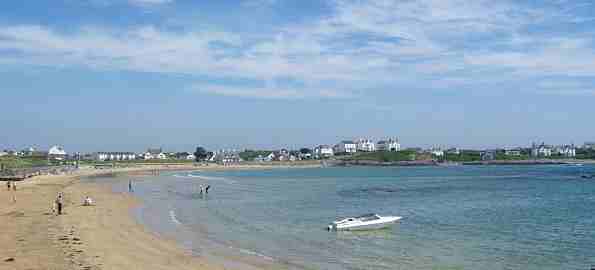
Half way up the 8 foot high cross, made from Anglesey limestone from Moelfre Quarry, is a carving representing a hand carrying a flame. This symbolises the light from Kildare, Ireland. At the head of the cross you can see the carved "Cross of Peace". The words "St. Bride, Pray for Us" are inscribed in four languages, English, Latin, Irish and Welsh; one on each side of the plinth.
And many accounts state that it was here that Saint Bride landed and founded a church. The sand dunes surrounding the site of this Celtic Cross form the surface of what was a burial ground. Excavations had been carried out in the 19th Century and it was estimated the mound originally contained about 400 graves, stacked in about 4 layers. Later research (1997) found graves within stone-lined cists. Radiocarbon dating points to the earliest burial dated to around AD 675. Researchers found a complete skeleton of a young child with a rough age of between 2 and 6 months.
Keep up to date with the latest news by subscribing to our free Anglesey Today Newsletter. It's as easy as 1-2-3, just complete the form here. So it is possible that the burial ground was used in the 6th century, during St Bride's time. It is also probable that the burial ground extended further out to sea.
Various estimates suggest the mound was over 30 feet high and had a circumference in excess of 700 feet.
Today, a much smaller part of the cemetry remains, the seaward sections having been washed away by the relentless actions of wind and sea. A chapel was built on the mound, probably in the early 1200's, ands was used until the 17th century. It stood on what is the present day promenade.
A print from 1776 shows the dilapidated vestige of the chapel. According to the 19th century local archaeologist and historian, the Hon W O Stanley, the east window of the chapel still stood in 1780.
A violent storm in 1913 finally destroyed the chapel on the mound. Today, the site is much better protected from severe sea conditions, following the extensive renewal of the promenade in front of the site of the stone cross. There is a small fence dividing the walkway from the cross, however, this does not stop people from leaving flowers at the foot of the cross. Walking along the beach front at Trearddur Bay you now get the real sense of the past being in harmony with the present, and no surge in wind and sea condition will move this millennium cross from its rightful place.
Return to Trearddur Bay Beach from Saint Ffraid
|





